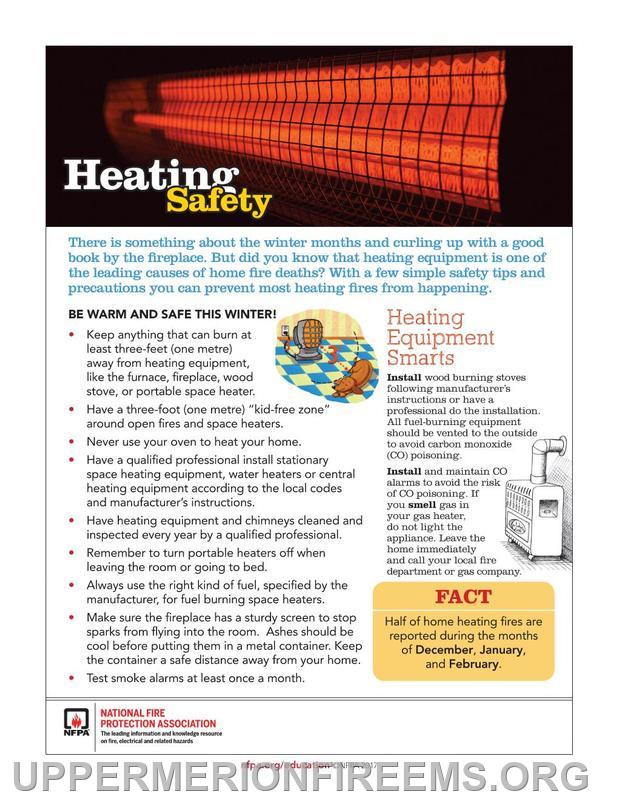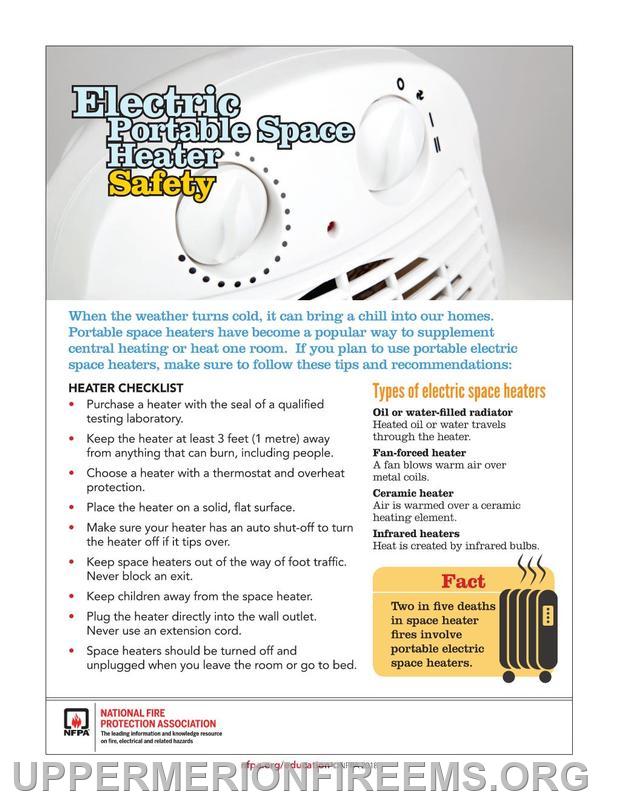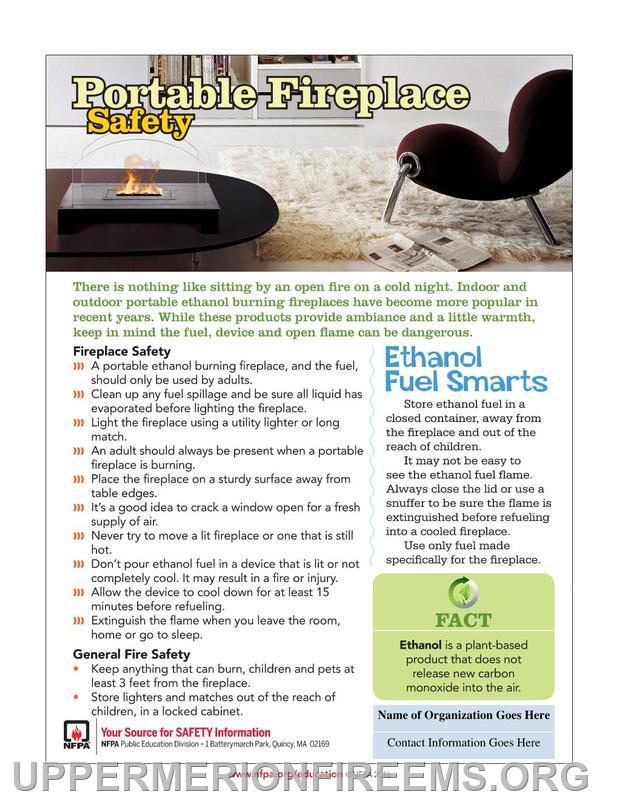| The high cost of home heating fuels and utilities have caused many people to search for alternate sources of home heating. The use of wood burning stoves is growing and space heaters are selling rapidly, or coming out of storage. Fireplaces are burning wood and man-made logs. All these methods of heating may be acceptable. They are, however, a major contributing factor in residential fires. Many of these fires can be prevented. The following fire safety tips can help you maintain a fire safe home this winter.
It is important that you have your furnace inspected to ensure that it is in good working condition. Be sure all furnace controls and emergency shutoffs are in proper working condition. Leave furnace repairs to qualified specialists. Do not attempt repairs yourself unless you are qualified. Inspect the walls and ceiling near the furnace and along the chimney line. If the wall is hot or discolored, additional pipe insulation or clearance may be required. Check the flue pipe and pipe seams to ensure they are well supported and free of holes and cracks. Soot along or around seams may be an indicator of a leak. Check to ensure the chimney is solid and free of any cracks or loose bricks. All unused flue openings should be sealed with solid masonry. Keep trash and other combustibles away from the heating system.
NFPA statistics indicate heating equipment is one of the leading causes of home fire deaths. Fire departments responded to an estimated average of 44,210 fires involving heating equipment per year, accounting for 13% of all reported home fires during this time, and these fires resulted in annual losses of 480 civilian deaths. Space heaters were the type of heating equipment responsible for the largest shares of losses in home heating equipment fires, accounting for one-third of the fires, but nearly nine out of ten deaths and four out of five of the injuries in home fires caused by heating equipment. Fires originating in a kitchen or cooking area accounted for the largest share of home heating fires (17%). While the larger (non-confined) fires involving fireplaces or chimneys were involved in fewer than one in ten fires caused by heating equipment (7%), they caused just over one-fifth of the direct property damage (22%).
Stay Safe! |



